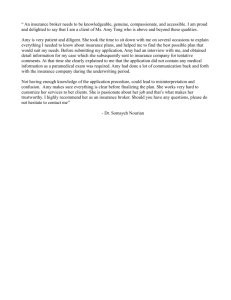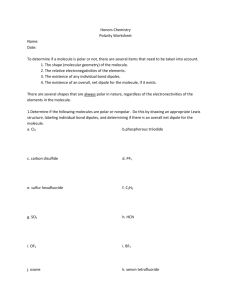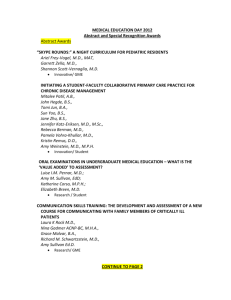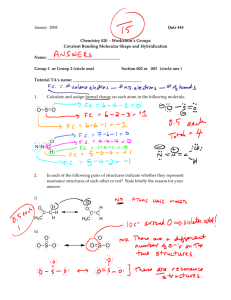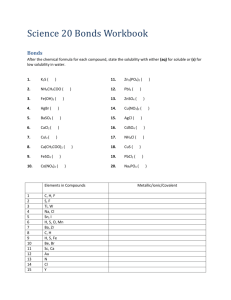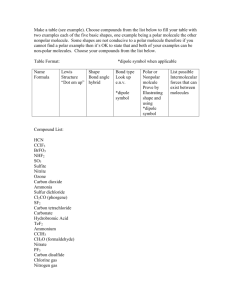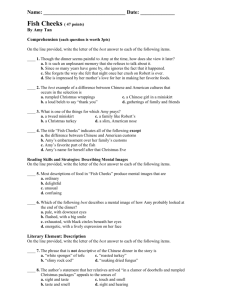Page 1 of 4 AP Biology Chapter 3 Guided Reading Assignment
advertisement
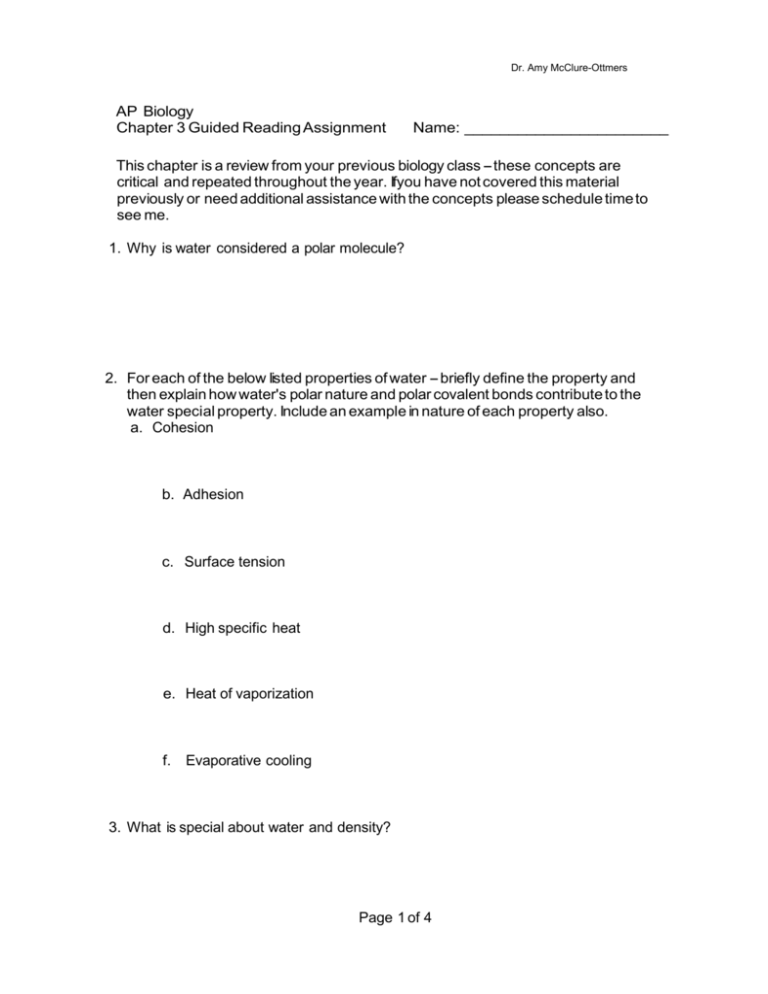
Dr. Amy McClure-Ottmers AP Biology Chapter 3 Guided Reading Assignment Name: _______________________ This chapter is a review from your previous biology class - these concepts are critical and repeated throughout the year. Ifyou have not covered this material previously or need additional assistance with the concepts please schedule time to see me. 1. Why is water considered a polar molecule? 2. For each of the below listed properties of water - briefly define the property and then explain how water's polar nature and polar covalent bonds contribute to the water special property. Include an example in nature of each property also. a. Cohesion b. Adhesion c. Surface tension d. High specific heat e. Heat of vaporization f. Evaporative cooling 3. What is special about water and density? Page 1 of 4 Dr. Amy McClure-Ottmers 4. Explain hydrogen bonding. How many hydrogen bonds can a single water molecule form? 5. Define the following terms: a. Solute b. Solvent c. Aqueous solution d. Hydrophilic e. Hydrophobic f. Colloid g. Molarity 6. Water has a high specific heat. What does this mean? How does water’s specific heat compare to Alcohol’s specific heat? 7. Explain why ice floats. Why is 4°C the critical temperature? Page 2 of 4 Dr. Amy McClure-Ottmers 8. Now, let’s do a little work that will enable you to prepare solutions. Read the section on solute concentrations carefully, and show the calculations here for preparing a 1-molar solution of sucrose. Steps to help you do this follow. The first step is done for you. Fill in the rest. Steps to prepare a solution: a. Write the molecular formula. C12H22O11 b. Use your periodic table to calculate the mass of each element. Multiply by the number of atoms of the element. (For example, O has a mass of 16. Therefore, one mole of O has a mass of 16 x 11 = 176 g/mole.) c. Add the masses of each element in the molecule. d. Add this mass of the compound to water to bring it to a volume of 1 liter. This makes 1 liter of a 1 M (1- molar) solution. 9. Can you prepare 1 liter of a 0.5-molar glucose solution? Show your work here. Page 3 of 4 Dr. Amy McClure-Ottmers 10. 11. What two ions form when water dissociates? Define the following terms: a. Acid b. Base 12. Even a slight change in pH can be harmful! How do buffers moderate pH change? 13. Exercise will result in the production of CO2, which will acidify the blood. Explain the buffering system that minimizes blood pH changes. 14. Give two reasons precipitation is more acidic today compared to 1900. Page 4 of 4
